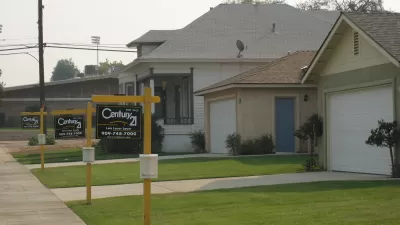Actual demand for a place's housing might exceed increases in the number of residents or households.

Every so often, I read something on a listserv on a Facebook group saying something like "my city added a few thousand households, and it added a few thousand housing units. Therefore, supply must be keeping up with demand."
Admittedly,, demand as well as supply is relevant to housing costs—that’s why declining cities are often so cheap. But household growth is not the best way to measure demand for housing.
This is the case for at least two reasons. First, treating "city household growth" as demand overlooks people who are priced out of a city and thus cannot form households in the city. For example, suppose that a city adds 200,000 apartments for 200,000 new households, but 500,000 households want to live in the city but are priced out. Obviously, the demand for the apartments includes not just the 200,000 households who can afford the city, but the 500,000 more who cannot (in addition to city residents who are homeless and might not be counted as households).
Second, even the "200,000 households" figure include people who are forced to live together by high housing costs, but who in a cheaper city would live alone. For example, suppose that two people live together as roommates in order to avoid Manhattan’s high rents, but would live alone if rents were lower. For purposes of calculating demand, are they one household or two?
Perhaps a city's job growth is a better measure of demand for that city's housing. For example, New York City added over 900,000 jobs during the 2010s, more than four times the number of housing units added. Does that mean that 900,000 new people joined the market for New York City housing during this period? Partially. On the one hand, this number might underestimate demand for New York housing, because some people priced out of New York decide to move to other parts of the United States. Thus, it might be argued that demand for housing includes not just the 900,000 new workers, but also an unknown number of people who wish they could work or create jobs in the city, but cannot do so due to high housing costs.
On the other hand, some of those 900,000 new employees live in suburbs for reasons unrelated to housing costs, and might not be willing to move into the city no matter how low rents go. If this is the case, some of these 900,000 new employees should never be counted as part of demand for city housing.
Thus, it seems likely to me that the demand for New York City housing exceeds the number of households—but I am not sure by how much.

Study: Maui’s Plan to Convert Vacation Rentals to Long-Term Housing Could Cause Nearly $1 Billion Economic Loss
The plan would reduce visitor accommodation by 25,% resulting in 1,900 jobs lost.

North Texas Transit Leaders Tout Benefits of TOD for Growing Region
At a summit focused on transit-oriented development, policymakers discussed how North Texas’ expanded light rail system can serve as a tool for economic growth.

Using Old Oil and Gas Wells for Green Energy Storage
Penn State researchers have found that repurposing abandoned oil and gas wells for geothermal-assisted compressed-air energy storage can boost efficiency, reduce environmental risks, and support clean energy and job transitions.

Santa Barbara Could Build Housing on County Land
County supervisors moved forward a proposal to build workforce housing on two county-owned parcels.

San Mateo Formally Opposes Freeway Project
The city council will send a letter to Caltrans urging the agency to reconsider a plan to expand the 101 through the city of San Mateo.

A Bronx Community Fights to Have its Voice Heard
After organizing and giving input for decades, the community around the Kingsbridge Armory might actually see it redeveloped — and they want to continue to have a say in how it goes.
Urban Design for Planners 1: Software Tools
This six-course series explores essential urban design concepts using open source software and equips planners with the tools they need to participate fully in the urban design process.
Planning for Universal Design
Learn the tools for implementing Universal Design in planning regulations.
Ascent Environmental
Borough of Carlisle
Institute for Housing and Urban Development Studies (IHS)
City of Grandview
Harvard GSD Executive Education
Toledo-Lucas County Plan Commissions
Salt Lake City
NYU Wagner Graduate School of Public Service






























